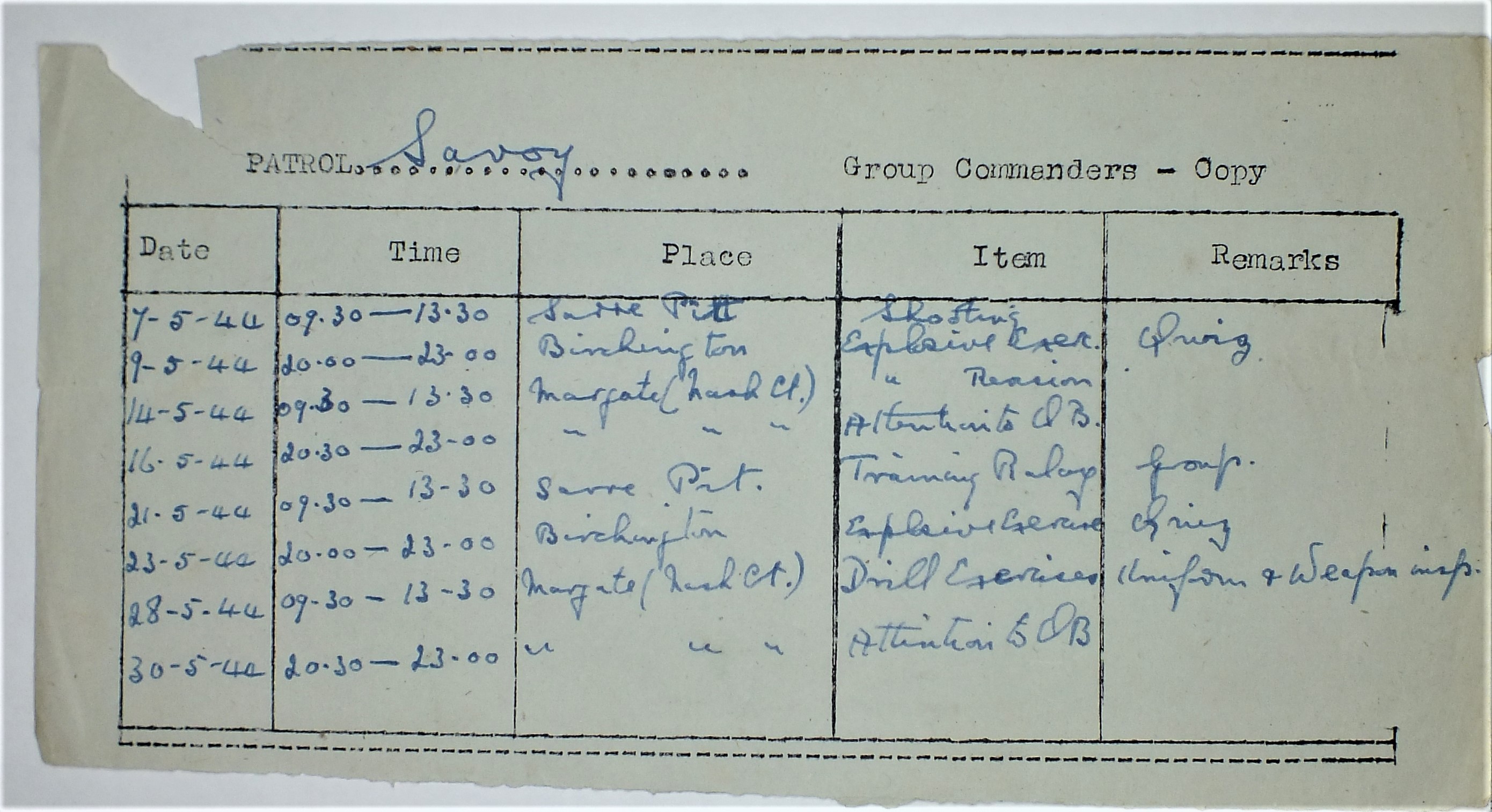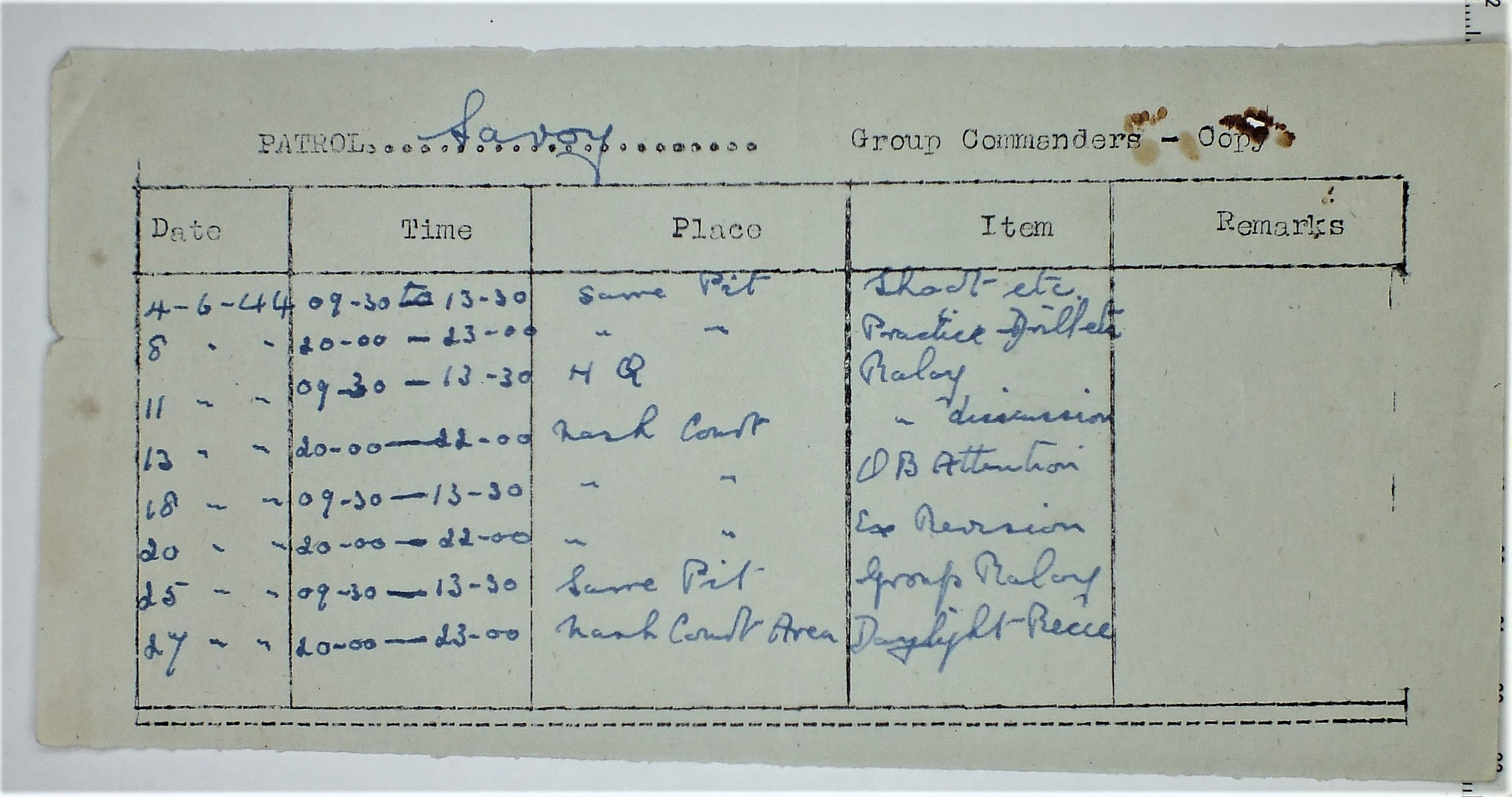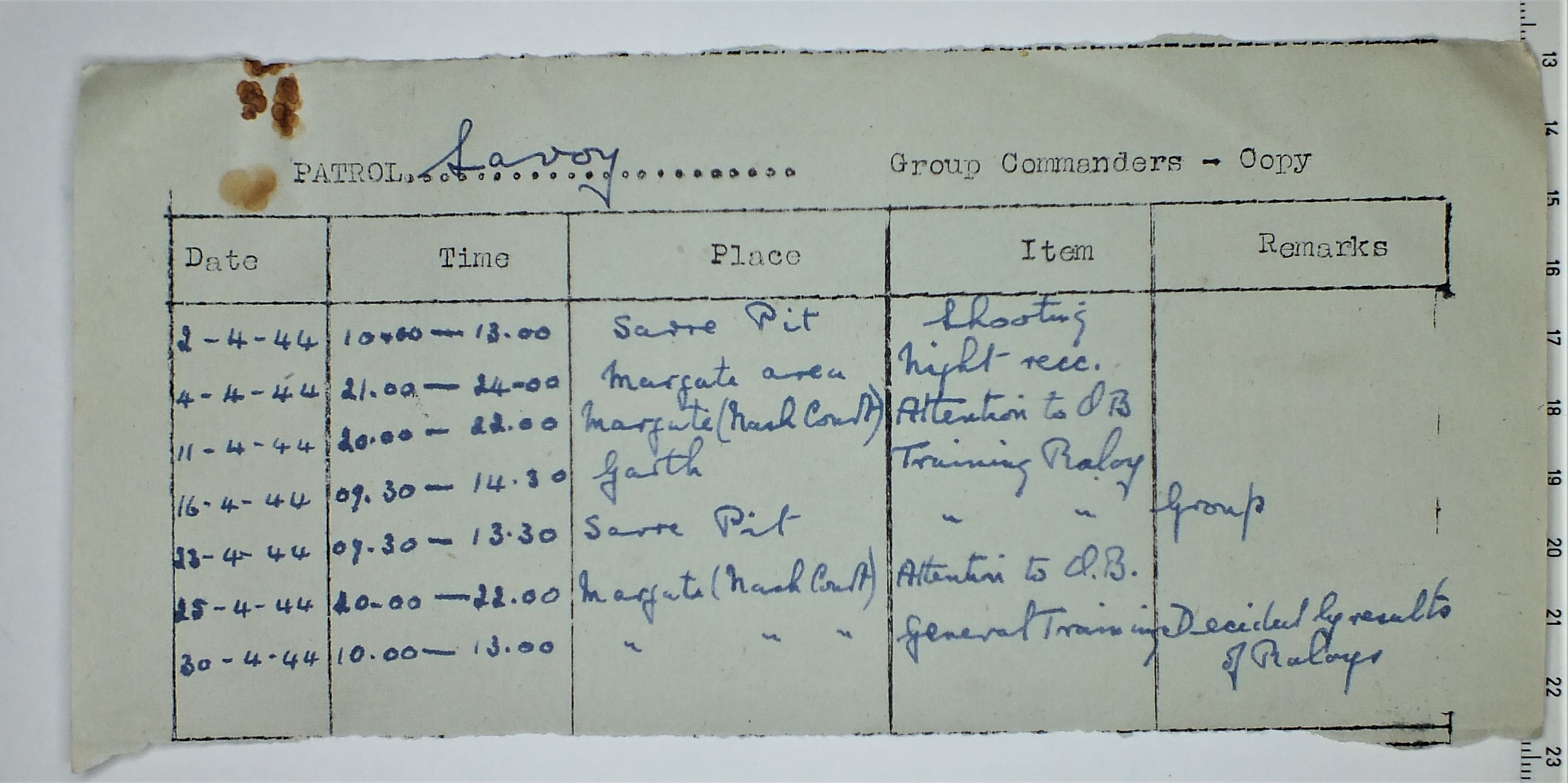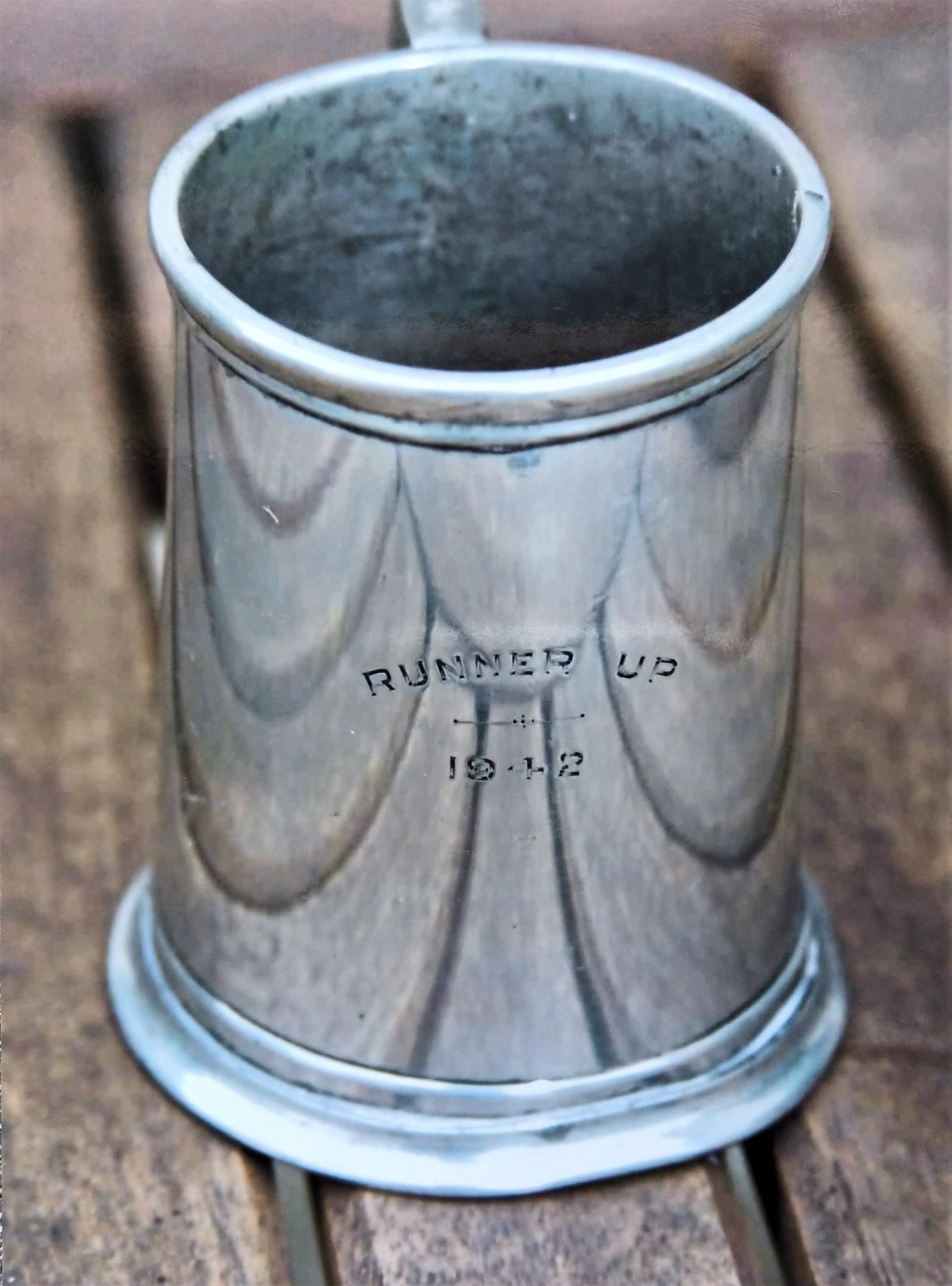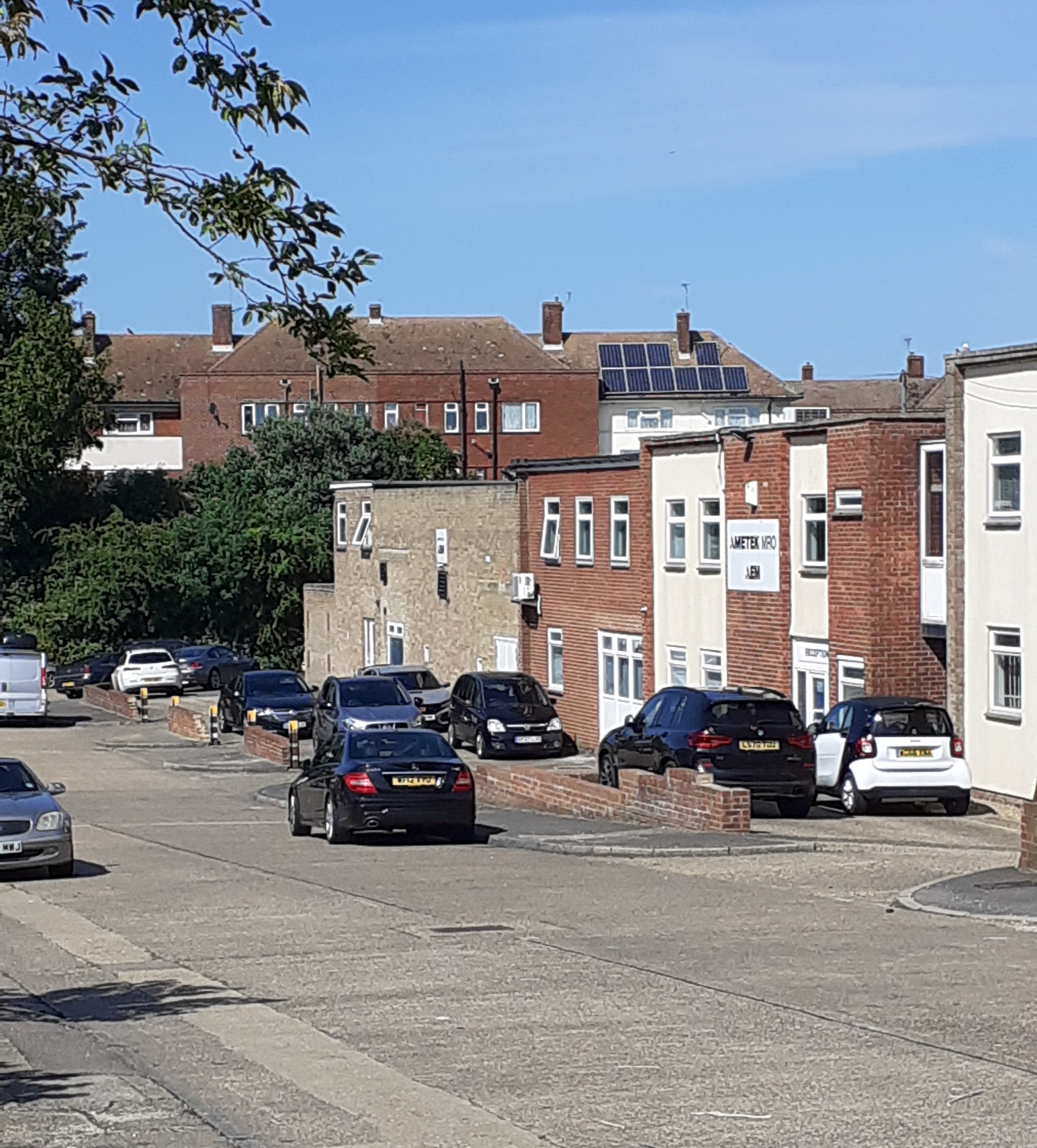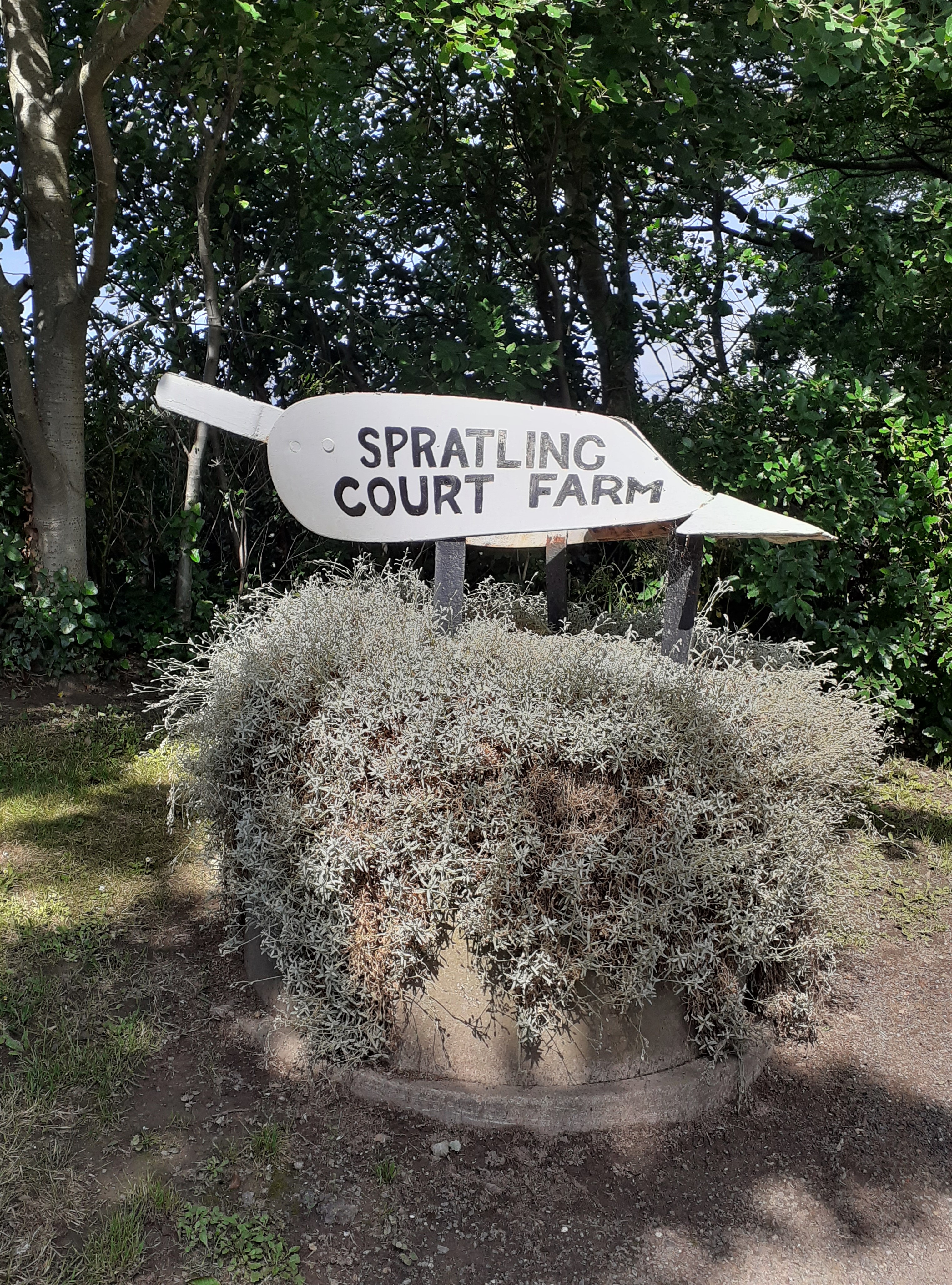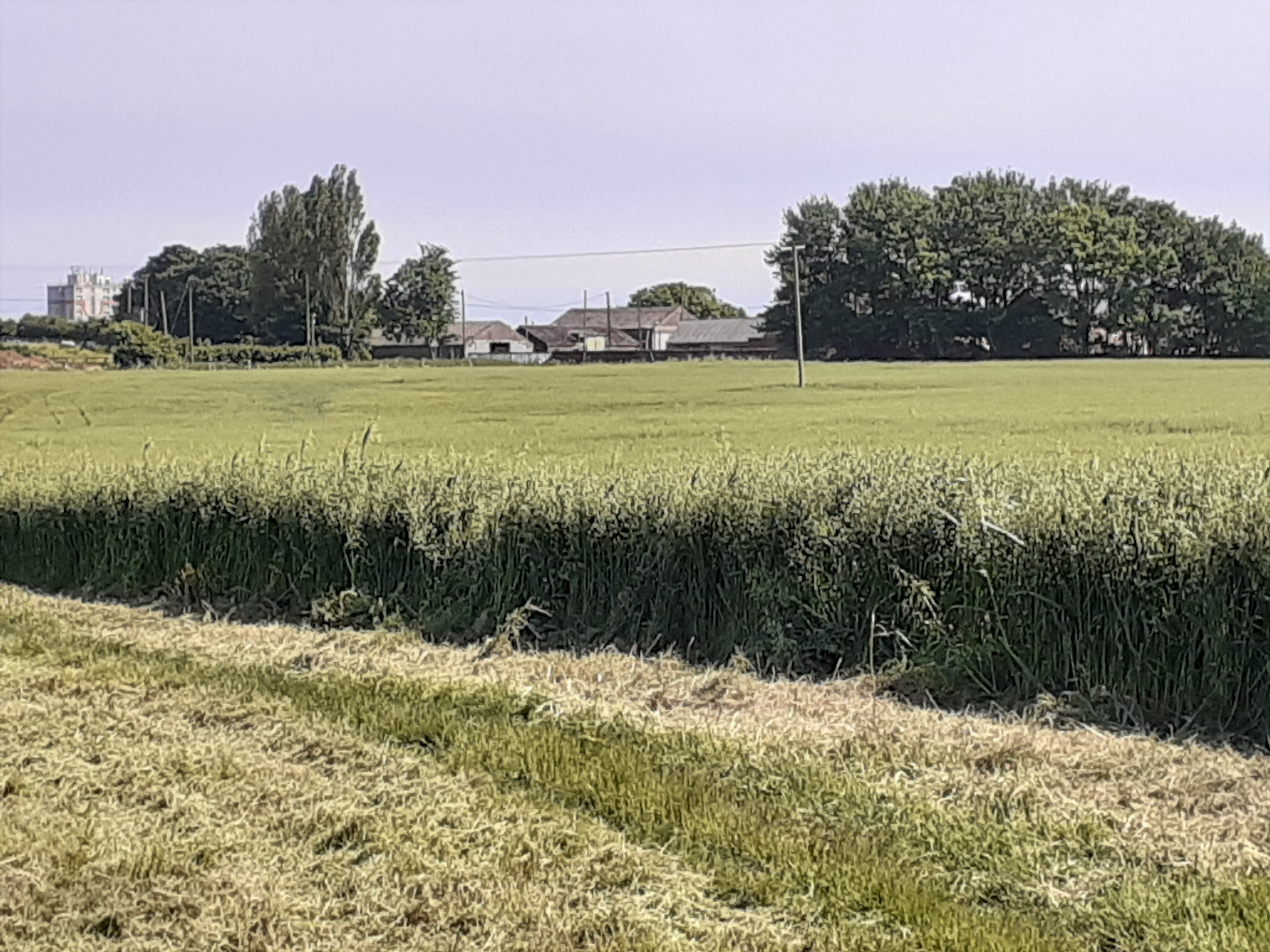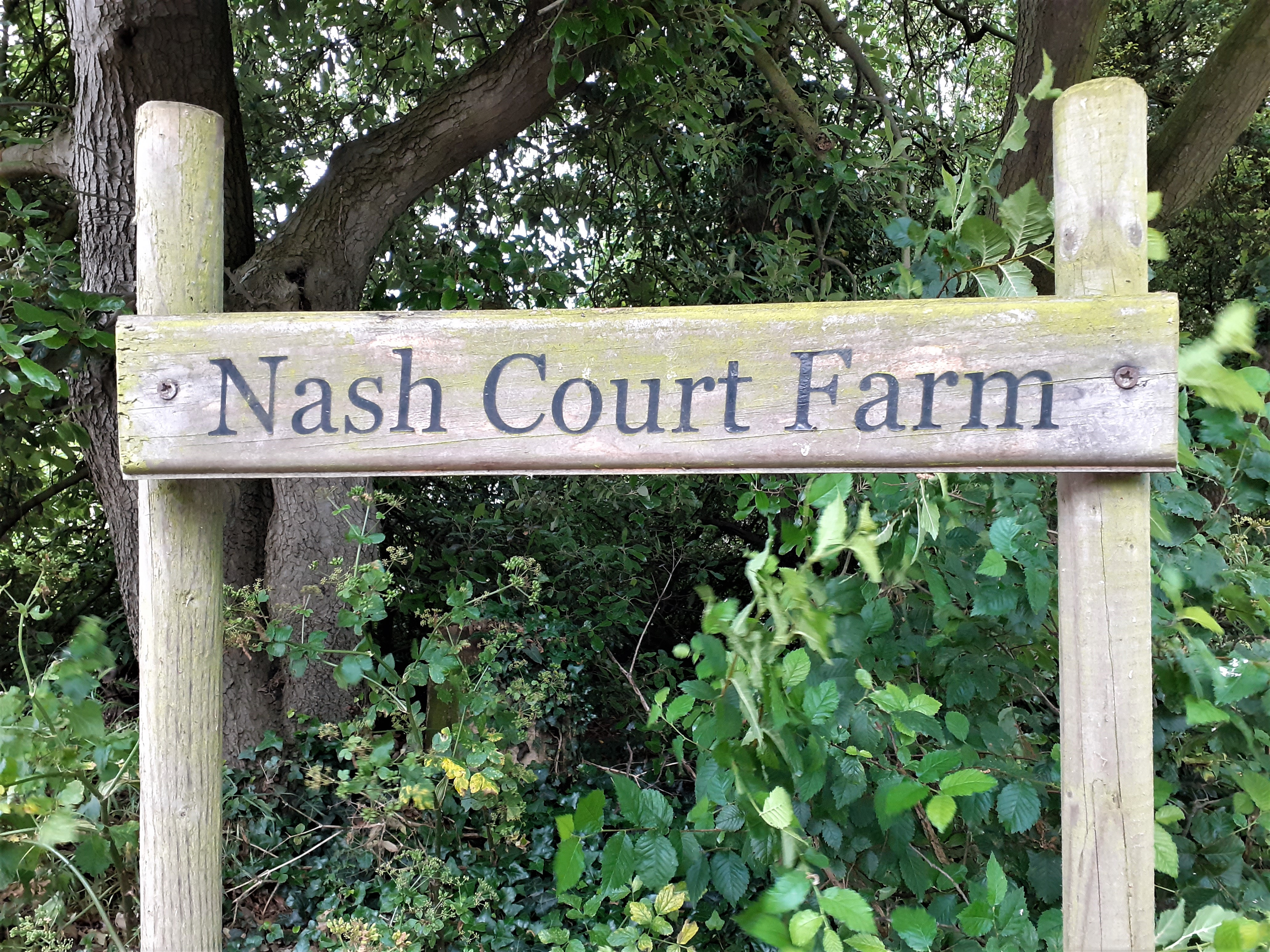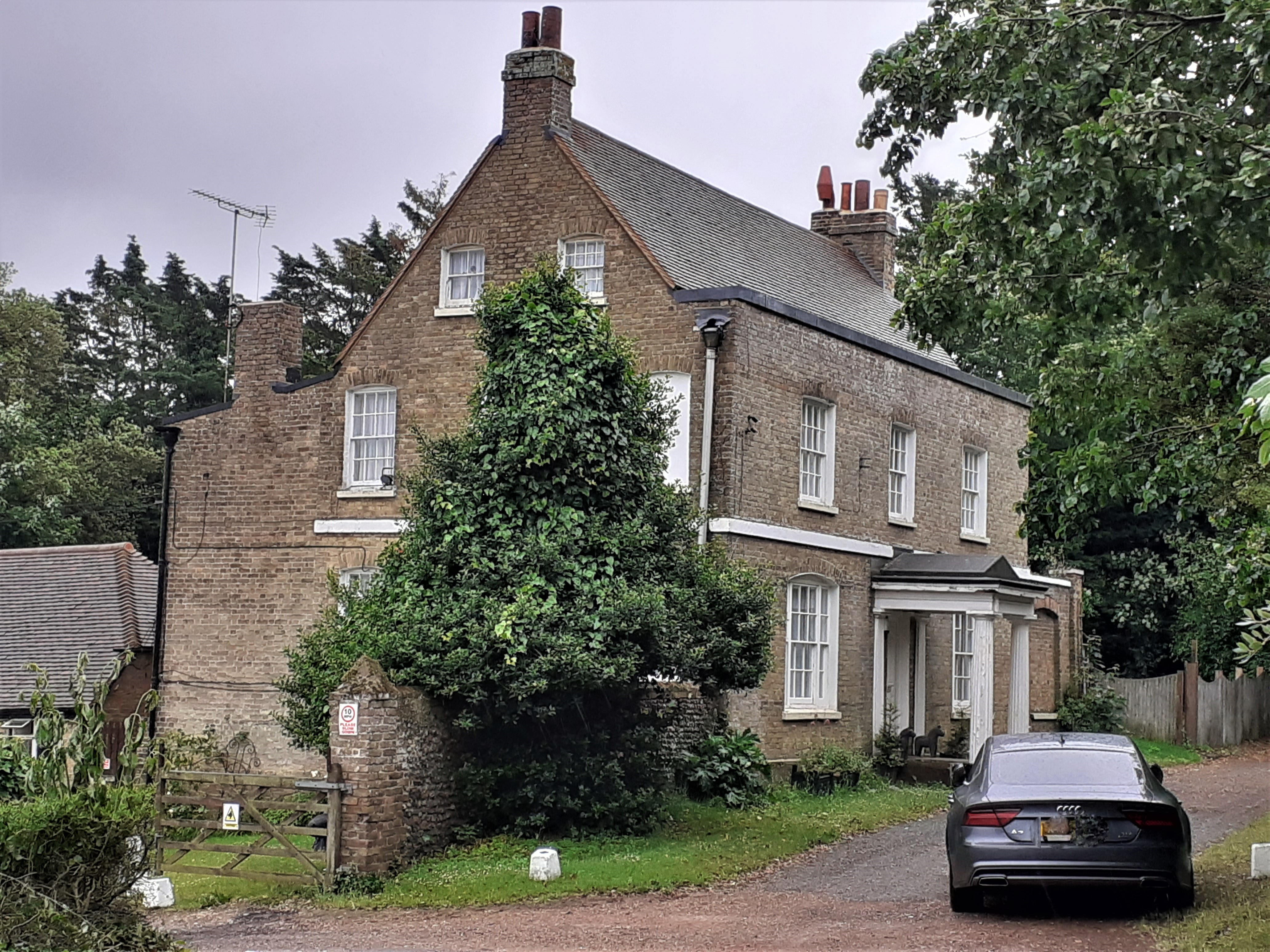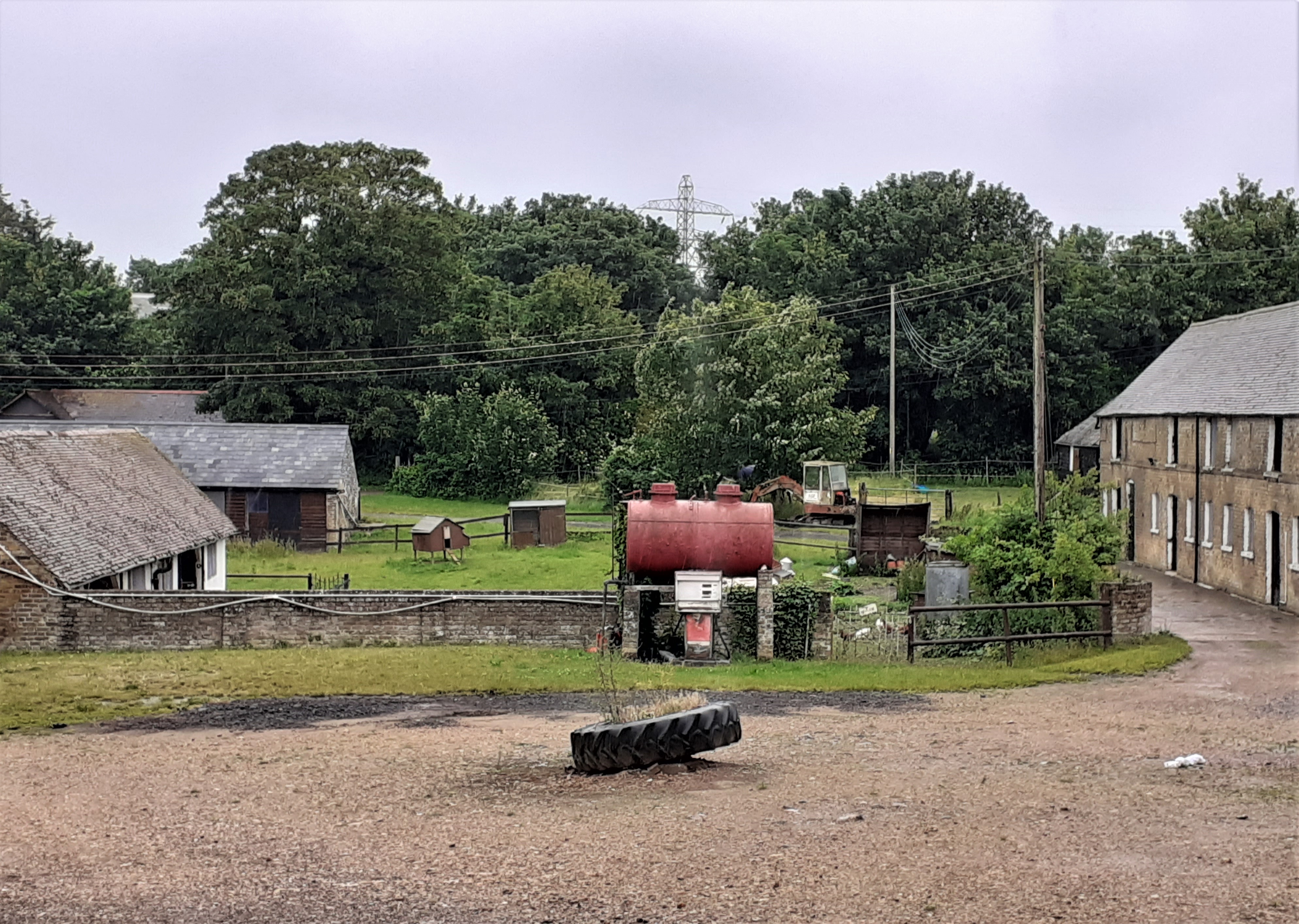Manston village lies 2.5 miles west of Ramsgate.
| Name | Occupation | Posted from | Until |
|---|---|---|---|
| Sergeant John Archibald Montgomery | Farming in partnership with father |
13 Jun 1940 | Unknown |
| Sergeant Norman Harold Steed | Farmer |
27 Jul 1941 | 03 Dec 1944 |
| Private John Philip Ash | Farmer & fruit grower |
29 Jul 1941 | 03 Dec 1944 |
| Private Norman Charles Austen | Farm steward |
27 Jul 1941 | Unknown |
| Private Robert Motion Montgomery | Farming in partnership with father |
13 Jun 1940 | Unknown |
| Private William Arthur Sayer | Assisting father on farm |
22 Jun 1942 | 03 Dec 1944 |
| Private Ronald Steed | Tractor driver & machinery supervisor |
11 Jun 1940 | 03 Dec 1944 |
| Private George Joseph Gunson Stennett | Farmer |
27 Jul 1941 | 03 Dec 1944 |
| Private William Percy Tabbush | Farmer |
24 Sep 1942 | 03 Dec 1944 |
| Private William Robert Cockett Tyrrel | Farmer |
24 Jul 1941 | 03 Dec 1944 |
The Patrol’s first OB was in a chalk pit between Spratling Court and Coldswood Farm and was built by the Army. It had a vertical shaft and an entrance and exit at the base. It was a room roughly 12 foot by 8 foot with six beds placed in two tiers, along with all other facilities such as a toilet, food store, ammunition and weapon store. It was filled in after the war. A smaller bunker was built at Manston Grove Farm.
Subsequently, the Patrol decided they wanted a base elsewhere and built one at Nash Court. Kent Historic Environmental Record describes it as; a Second World War Auxiliary Units Operational Base was located at Nash Court Farm. The base was built into earlier tunnels that may represent a denehole that was recut as an underground store (or chapel). The site is long known and believed to still exist. It was described by the landowner in 2015 (whose father was in the Auxiliary Unit) as having a trefoil decorated font as well as a secret access to the auxiliary base. The site was filled in in the 1950s to prevent access but is believed to still exist under what was the kitchen garden of Nash Court.
Another large OB was at Haine Brickworks. It was entered by moving away a section of what appeared to be a solid wooden retaining wall above which was an ash tip. The three centre boards of the wall were invisibly hinged and swung inwards when a bent nail was depressed. The tunnel behind led to a chamber beneath the main machinery house. There was also a shaft and ladder leading to the machinery house. This has now disappeared under an industrial estate.
Manston (Savoy) Patrol
Norman Steed discovered an old tunnel that reached from the edge of Manston Aerodrome right under the runways. He called in his Intelligence Officer to explore it with him. Fifty yards along the tunnel they came to a fall that blocked it completely. Cleared, the tunnel would have provided a perfect way in and out of the aerodrome. Before the sappers could start work, a German bombing raid inadvertently destroyed the tunnel.
County heats for the County Patrol competition took place 12 Sept 1943. The top ten scoring Patrols competed to represent Kent on Sunday 19th September. Savoy was in the top ten. "Maize had just a generally high standard in all events and so had Savoy. You will notice as a matter of interest that each won only one event - Dummy Grenades - in which they tied". Savoy came second with 40 points.
Proficiency competitions were held at Coleshill involving patrols from across the country. The Manston Patrol came second in 1942 and received a beer mug engraved “Runner Up.” Mrs Sarah Ash, daughter in law of John Ash, and daughter of Norman Steed still has one of the beer tankards. Steed remembered a Sussex Patrol came first.
Norman Steed: “Once we were sent to Coleshill in uniform. We would travel right through London without a tie on. In those days that was thought undressed, but we didn’t bother, we hadn’t had any instructions. One other instruction we never received was how to salute. If an officer walked by we had to turn away and pretend to stare into a shop window. I remember that we got a rocket about it afterwards. They told us we’d have to learn to look like soldiers before were reported as spies. Finally, there was a directive from HQ and we were then put through the instructions of what to wear and how to salute. We were a pretty rabble, a rough lot.
We met regularly at The Garth on a Sunday morning. I recognised and trained with farmers from other areas, including Cecil Lines and Jim Mount, and my brother, Guy. The groups appeared to be the thickest on the ground along the East coast, but I never knew where their OBs were or anything about their activities. We trained with the Army. The Army was prepared to play with us as it were in a game of war and our job was to try and show that we had spotted them and blown them up. We had to be able to place explosives on any of the German equipment, be it aircraft, tanks or what have you. We were trained in the use of sticky bombs, and explosives with time switches so that we could place them in position and get away to safety. We were trained in night travel and shown methods of approach so one could get into all sorts of difficult places to place the explosives. We were issued with some very strong wire that we could stretch across the road when motorcyclists were coming. A terrible thing to do but we never did use them."
Captain Gardner's papers shows shooting practice was carried out at Sarre Chalk Pit. Explosives training was at Birchington.
Norman Steed: “We were issued with first class weapons which came from America, including .38 pistol, a .22 peep-sized rifle and several other small arms that we were allowed to use. We didn’t have any noisy weapons. The .22 was supposed to be able to pick off individual persons. Of course, we were issued with explosives and fuse wires, trip wires and all the paraphernalia we required."
John Montgomery, Robert Montgomery and Norman Austen were originally part of ‘Savoy’ Patrol but were asked to form the new 'Maize' Patrol with new recruits as it was decided that more Patrols were needed in the area.
Norman Steed: “Our instructions in the event of an invasion were to go to ground for about two weeks, after which we were to re-emerge. If the Germans were in control we were to ditch our military uniforms and carry on as farmers. When opportunities presented themselves we would carry out acts of sabotage and destruction, especially aircraft, tanks, vehicles and big guns.
The Isle of Thanet, in those days, was almost empty of people. The towns were empty and houses and shops boarded up. We had special passes allowing us to travel unhindered by the Army or Police. If we saw anyone enter our OB we were to inform the Police. During the Occupation we were to deal with the person, ourselves. This meant death, as security was essential. I am sure the Germans would have been ruthless and if we were successful they would have been more alert and would have, eventually, traced us. Reprisals would not have been a problem as there was hardly anybody around. This was a restricted area, so by the very nature of those here, everybody would have fought the Germans."
During the early part of 1944 group leaders were told that members of Patrols should be asked to volunteer to be parachuted into France ahead of the D-Day landings to impede the German counter-attack. However, Norman Steed’s Patrol knew they were only useful on their home ground.
Norman Steed continued: “We were instructed that if any of our six men were injured and couldn’t be saved we would have to shoot him or kill him some way or the other. We were instructed how best to do this. A terrible thing to have to do but it was our instruction. In other words, not one of us could be captured alive otherwise he could be forced to divulge the rest of it. This was very worrying indeed because they were all my friends; one of whom was my brother, Ron Steed. I was only so grateful it never had to happen.”
TNA ref WO199/3391 and WO199/3390
Hancock data held at B.R.A
Phil Evans
Adrian Westwood who interviewed Norman Steed and Mrs Ash
Norman Bonney for Captain Gardner's papers
